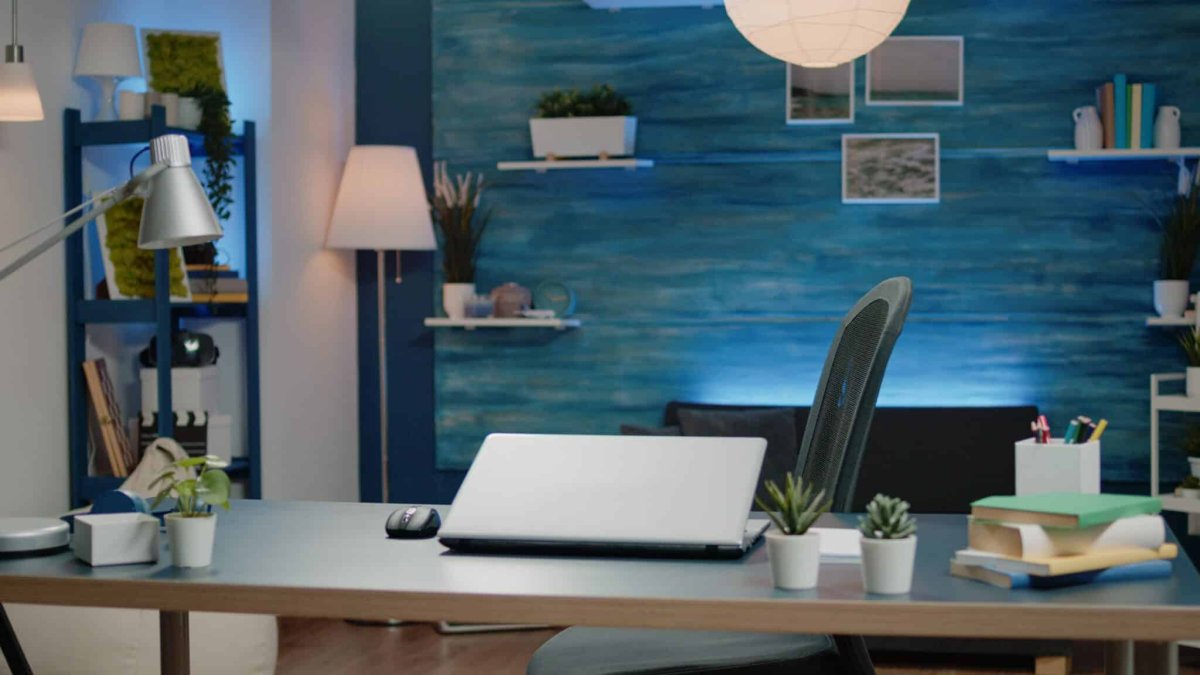How to Create a Smart Home Office introduces a transformative concept, blending productivity with technological sophistication. This guide navigates the complexities of designing a workspace that seamlessly integrates smart technology, optimizing both comfort and efficiency. It’s about crafting a tailored environment where your work life thrives, enhanced by the power of automation and intelligent devices.
Setting up a smart home office can significantly boost productivity. This involves integrating various smart devices, and a crucial aspect of this is understanding how to manage them. You’ll find it very helpful to learn How to Control Smart Devices Remotely , as this capability is essential for remote access and control, ultimately enhancing the functionality of your smart home office setup.
From defining your specific needs to budgeting and troubleshooting, this exploration covers every facet of smart home office creation. It delves into essential devices, networking considerations, and the crucial aspects of security and ergonomics. You’ll learn how to plan your setup, choose the right technologies, and integrate them for a streamlined and productive work experience. We’ll discuss smart lighting, thermostats, security systems, voice assistants, and the importance of a robust Wi-Fi network. This guide also addresses the significance of proper posture, ergonomic equipment, and automating your workspace for maximum efficiency.
Creating a smart home office involves optimizing your workspace for productivity and efficiency. Just as one considers functionality and aesthetics when deciding, for instance, How to Design a Smart Kitchen with Style , a well-designed smart office utilizes technology to streamline tasks and enhance your work environment. This ensures a comfortable and connected setup for maximizing your output in your smart home office.
How to Create a Smart Home Office
The modern workplace is evolving, and the home office is no exception. Integrating smart technology into your home office can dramatically enhance productivity, comfort, and security. This guide will walk you through the process of creating a smart home office tailored to your specific needs.
Defining Your Smart Home Office Needs, How to Create a Smart Home Office

Source: aisav.com
Before investing in smart devices, it’s crucial to define your requirements. This involves identifying your primary work activities, common challenges in a home office, and the desired features for your smart setup.
- Identify your primary work activities and how technology can improve them: Consider the tasks you perform daily. Do you frequently attend video conferences? Do you need to manage multiple documents simultaneously? Determine how technology can streamline these activities. For instance, a high-resolution monitor and a noise-canceling headset can significantly improve the video conferencing experience.
- Provide a list of common challenges faced in a traditional home office environment: Traditional home offices often suffer from distractions, poor lighting, and inconsistent temperature control. Identify these pain points to guide your smart home office design.
- Discuss the specific features and functionalities you desire in your smart home office: What features would make your workspace more efficient and comfortable? This could include automated lighting, voice-controlled devices, or a smart security system.
Planning Your Smart Home Office Setup
A well-planned setup is essential for a functional and efficient smart home office. This includes creating a checklist of essential devices, designing a floor plan, and selecting the optimal location within your home.
- Create a checklist of essential smart home devices for a productive workspace:
- Smart lighting (e.g., Philips Hue)
- Smart thermostat (e.g., Nest)
- Smart plug (e.g., TP-Link Kasa)
- Voice assistant (e.g., Amazon Echo, Google Nest)
- Smart security system (e.g., Ring, Arlo)
- Design a floor plan illustrating the placement of devices and furniture: Visualize the layout of your office. Consider the placement of smart devices to ensure optimal functionality and coverage.
- Elaborate on the considerations for choosing the right location within your home: Choose a location that offers minimal distractions, sufficient natural light, and adequate space for your equipment. Consider factors like noise levels and internet connectivity.
Essential Smart Home Devices and Technologies
Several smart home devices can significantly enhance the functionality and comfort of your home office. Understanding the benefits of each device is crucial for making informed decisions.
- Detail the benefits of using smart lighting in a home office: Smart lighting systems allow you to adjust brightness and color temperature, improving visibility and reducing eye strain. You can also automate lighting schedules to match your work hours.
- Explain how smart thermostats can optimize comfort and energy efficiency: Smart thermostats learn your preferences and adjust the temperature accordingly, providing optimal comfort while conserving energy. They can be controlled remotely and integrated with other smart devices.
- Provide a table comparing different smart home security systems:
Feature Ring Arlo SimpliSafe Video Quality 1080p 2K 720p Monthly Monitoring $20/month $14.99/month $24.99/month Wireless/Wired Both Wireless Wireless Integration Alexa, Google Assistant Alexa, Google Assistant, Apple HomeKit Alexa, Google Assistant - Demonstrate the integration of voice assistants like Alexa or Google Assistant: Voice assistants can control various smart devices, allowing you to manage your office environment hands-free. For example, you can turn on lights, adjust the thermostat, and play music with voice commands.